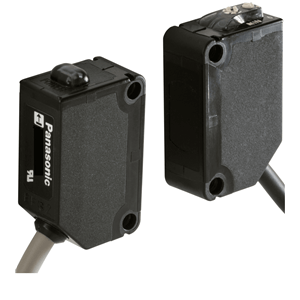Panasonic CX-413-J Sensor: Reliable and High-Performance Industrial Solution
The Panasonic CX-413-J sensor is a top-tier industrial-grade sensor tailored to meet the demands of modern automation systems. Featuring a long detection range, robust build, and fast response time, this sensor is ideal for heavy-duty applications and complex manufacturing setups. This article delves into its specifications, applications, installation process, and troubleshooting, helping you understand why it’s the perfect choice for industrial environments.
Specifications of the Panasonic CX-413-J Sensor
The CX-413-J sensor is equipped with advanced features to ensure efficiency and reliability:
- Detection Range: Up to 50 meters for versatile usage
- Response Time: Less than 1 millisecond, ensuring real-time precision
- Power Supply: 12V-24V DC
- Output Type: NPN/PNP transistor output for seamless integration
- Protection Rating: IP67, offering resistance to water and dust
Applications of the CX-413-J Sensor in Industrial Environments
The Panasonic CX-413-J sensor is suitable for a variety of industrial applications, ensuring high performance in multiple sectors:
- Object detection and positioning in manufacturing lines
- Real-time monitoring in automation systems
- Quality control applications to ensure product consistency
- Proximity sensing in safety and security systems
- Logistics and packaging for counting and verifying items
Its reflective sensor technology ensures precision even in dynamic and harsh environments, making it a trusted choice for industrial automation.
Installation Guide for the Panasonic CX-413-J Sensor
Installing the CX-413-J sensor is straightforward and user-friendly. With the included installation guide, you can integrate the sensor into your system seamlessly. The process involves:
- Positioning the sensor at the optimal angle for detection
- Connecting the power supply and automation system
- Adjusting sensitivity and detection range settings for specific applications
Proper installation ensures long-lasting performance and minimizes the need for adjustments over time.
Advanced Features of the CX-413-J Sensor
The CX-413-J sensor offers advanced capabilities, such as a long detection range of up to 50 meters, making it ideal for both short- and long-range detection tasks. Additionally, the sensitivity adjustment feature allows users to customize the sensor’s performance, reducing false triggers and improving accuracy in dynamic industrial settings.
Durability and Operational Stability
Built with an IP67-rated enclosure, the Panasonic CX-413-J sensor is designed to withstand tough industrial conditions. It is resistant to dust, water, and temperature fluctuations, ensuring consistent operation in demanding environments. This durability reduces downtime and enhances operational stability, making it a cost-effective solution for heavy-duty applications.
Troubleshooting and Maintenance
The CX-413-J sensor includes diagnostic features that help users identify and resolve issues quickly. Troubleshooting common problems such as misalignment or signal inconsistencies becomes easier with its built-in indicators, minimizing delays and ensuring efficient workflows.
Why Choose the Panasonic CX-413-J Sensor?
The Panasonic CX-413-J sensor offers several advantages that set it apart:
- Fast response time for real-time monitoring and decision-making
- Long detection range for versatile applications
- Durable build for use in harsh industrial environments
- Easy installation and customization
- Low maintenance requirements, reducing operational costs
Conclusion: Elevate Your Industrial Processes with the CX-413-J Sensor
The Panasonic CX-413-J sensor is a reliable and high-performance solution designed for demanding industrial environments. Its advanced features, including a long detection range, fast response time, and robust construction, make it an invaluable tool for automation and heavy-duty applications. Order your CX-413-J sensor today and experience improved efficiency, accuracy, and durability in your industrial operations.
What is a Photoelectric Sensor?You can read our blog post.

